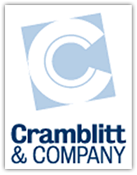PR in practice: Beyond slinging
July 27th, 2009 | 1 Comment
PR 101 goes like this: write the release, get the approval, send it out over Business Wire or PR Newswire, and start on the next one. It’s not communicating, it’s press release slinging.
This might be fine if you are Microsoft. But, if you are the rest of us, you should care who’s getting your release and what they are doing with it. That requires having specially tailored press lists for each of your clients, and finding ways to engage key media people and market influencers.
Preparing press lists is not hard, but it’s time-consuming, tedious and continuous. It’s also worth it: Addressing your press release to a specific person at a specific publication could mean the difference between editorial consideration and getting lost in the wire service avalanche. Here are the basic steps:
· Find out from your clients which publications, online magazines, bloggers and groups are most important to their business. Add to the list by researching competitors to those publications and searching media directories using key words that are important to your client’s business. Search your client’s competitors’ sites to see if you can find out which media outlets they might be targeting.
· Identify the appropriate people to receive your news. You typically send a product announcement or other news-related item to a new products editor, editor or managing editor. If you’re sending a customer application story, you will usually send it to a features editor or the editor.
· Decide if the release needs to go out via both a wire service and your in-house list or just to the in-house list. Many new product releases and minor business announcements only need to go to the trade media, saving your client a few hundred bucks.
· Determine the handful of editors, writers and bloggers who are most important to your client, and make sure they receive a personalized note geared to their areas of interest. If you don’t yet know these people, get to know them by reading their work, commenting on it, and sharing information.
· Follow-up with key editors, writers and bloggers by offering something extra – a one-on-one interview with the product manager, an exclusive image, a personalized demo, or a conversation with a product user. Never, never utter these words: “Did you get my press release”? Bring something to the table in every transaction or don’t come to the table.
· Bring social media into the mix by posting a low-key announcements tagged to a free offer on LinkedIn groups, Twitter and other outlets.
· Once you have compiled your initial press list, update, update and update some more to keep your list current and ensure that your news is going to the most appropriate person.

